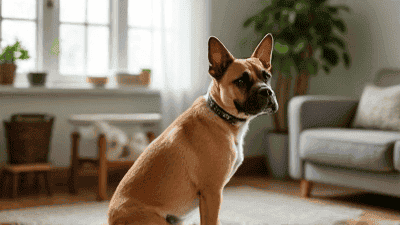
Bringing a new rescue pet into your home is an exciting and rewarding experience. It’s also a big responsibility. Rescue pets often come with unique challenges, especially if they’ve experienced trauma or neglect. Preparing your home properly can help ease the transition for your new furry friend and set the stage for a happy, healthy life together.
Rescue pets often come from varied and sometimes difficult backgrounds. They may have experienced abandonment, abuse, or neglect, which can affect their behavior and emotional well-being. Understanding their history can help you anticipate their needs and provide the best care.
Some rescue pets may exhibit fear, anxiety, or aggression initially. Be patient and prepared to work with a trainer or behaviorist if needed. A calm and understanding approach will help your pet feel secure and build trust over time.

Designate a quiet, comfortable space where your pet can retreat and feel safe. This could be a spare room, a corner of the living room, or a crate (if they’re crate-trained). Make sure the area is free from hazards and easily accessible.
A soft bed or blanket will make your pet feel welcome and secure. If your pet is crate-trained, place the bed inside the crate to create a cozy den-like space.
Choose sturdy, non-tip bowls that are easy to clean. Stainless steel or ceramic bowls are ideal because they are durable and resistant to bacteria.
Consult the shelter or rescue about the type of food your pet has been eating. Gradually transition to a new diet if necessary to avoid digestive upset. Look for high-quality, age-appropriate food that meets your pet’s nutritional needs.
Even if your pet will be indoors, a collar with an ID tag is essential in case they escape. Choose a comfortable collar and a sturdy leash for walks.
Toys provide mental stimulation and help alleviate boredom. Look for toys that match your pet’s size and energy level. Puzzle toys, chew toys, and interactive toys are great options.
Basic grooming supplies, such as a brush, nail clippers, and pet-safe shampoo, will help keep your pet clean and healthy.

Establish a regular feeding schedule to help your pet adjust to their new environment. Most adult pets do well with two meals a day, while puppies and kittens may need more frequent feedings.
If your pet is not already house-trained, be prepared to start or continue training. Designate a specific area for bathroom breaks and take your pet there frequently, especially after meals and naps.
Daily exercise is essential for your pet’s physical and mental well-being. Plan for walks, play sessions, or interactive games to keep them active and engaged.
Pets thrive on routine, so establish a consistent bedtime and wake-up time. Provide a comfortable sleeping area where your pet can rest undisturbed.
Introduce your new pet to existing pets slowly and carefully. Keep initial interactions short and supervised to prevent conflicts. Gradually increase the time they spend together as they become more comfortable.
Teach children how to interact with the new pet gently and respectfully. Supervise all interactions to ensure safety and prevent overwhelming the pet.
Establish rules for how the pet should behave in the home, such as not jumping on furniture or begging for food. Consistency is key to helping your pet understand and follow these boundaries.

Take your pet to the veterinarian within the first few days of bringing them home. The vet will perform a health check, update vaccinations, and discuss preventive care, such as flea and tick treatment.
If your pet hasn’t already been spayed or neutered, discuss the procedure with your vet. Spaying or neutering helps prevent health issues and behavioral problems.
Consider purchasing pet insurance to help cover unexpected medical expenses. Many plans offer coverage for accidents, illnesses, and routine care.
It may take time for your rescue pet to feel comfortable in their new home. Be patient and give them space to explore and adjust at their own pace.
Reward your pet with treats, praise, and affection for good behavior. Positive reinforcement helps build trust and encourages desired behaviors.
Spend time bonding with your pet through play, training, or simply relaxing together. Building a strong relationship will help your pet feel loved and secure.
Enroll your pet in obedience classes or work with a trainer to address behavioral issues and improve socialization. A well-trained pet is easier to manage and more enjoyable to live with.
Provide enrichment activities to keep your pet’s mind active and prevent boredom. Puzzle toys, treat-dispensing toys, and interactive games are great options.
Establish a grooming routine to keep your pet’s coat, nails, and teeth healthy. Regular grooming also provides an opportunity to check for signs of illness or injury.
Some rescue pets may experience separation anxiety when left alone. Gradually acclimate your pet to being alone by leaving for short periods and gradually increasing the duration. Provide toys or treats to keep them occupied.
If your pet is fearful or shy, avoid forcing interactions. Instead, create a safe space where they can retreat and gradually encourage them to come out on their own terms.
Aggressive behavior may stem from fear or past trauma. Work with a professional trainer or behaviorist to address the root cause and develop a plan for managing it.
Preparing your home for a new rescue pet is an important step in ensuring their safety, comfort, and happiness. By understanding their background, creating a safe space, and gathering essential supplies, you can make the transition as smooth as possible. Building trust and establishing a routine will help your pet feel secure and adapt to their new life. Remember, patience and empathy are key when welcoming a rescue pet into your home. With love, care, and preparation, you’ll create a strong bond and give your new companion the second chance they deserve.